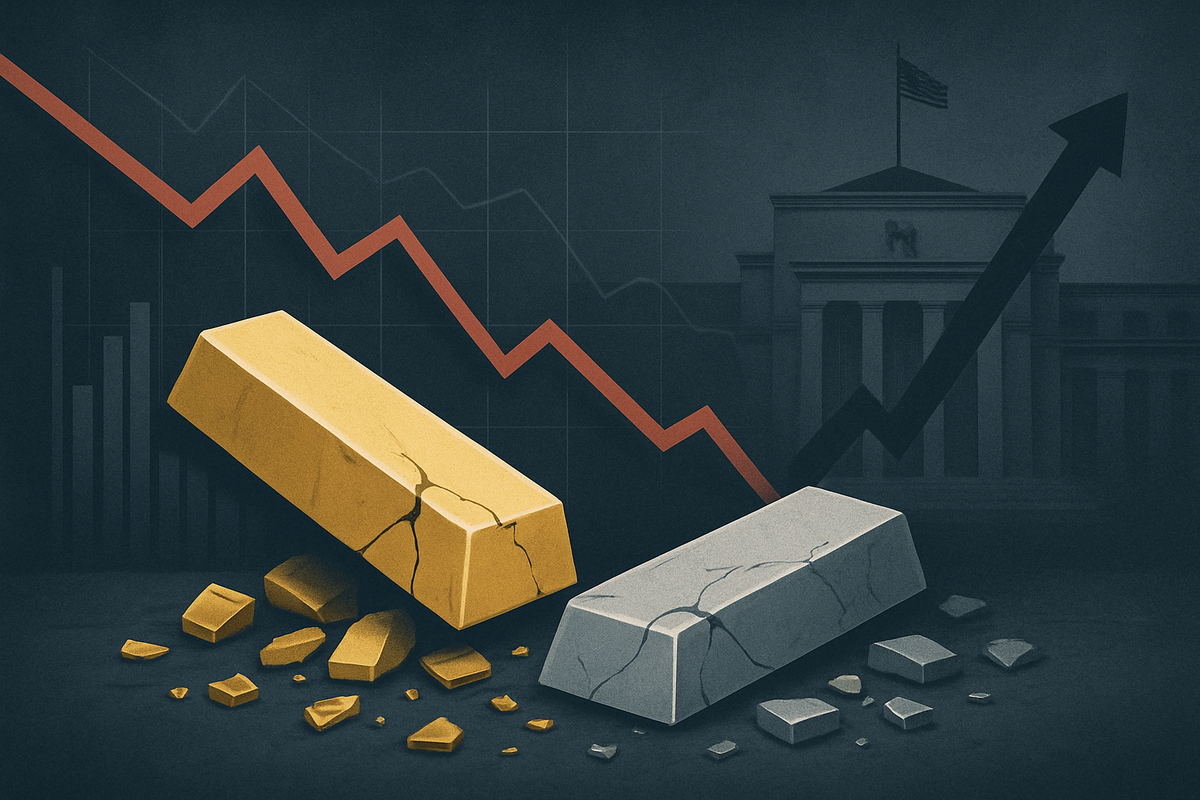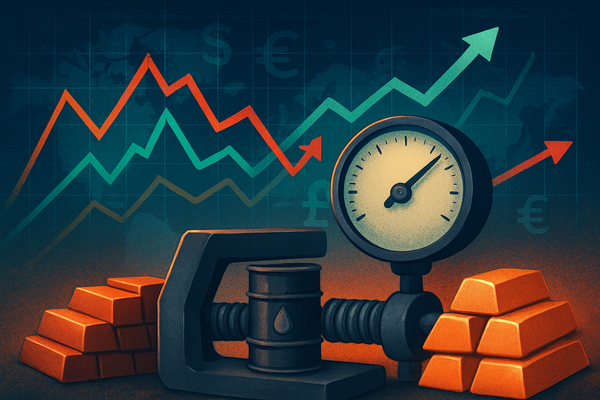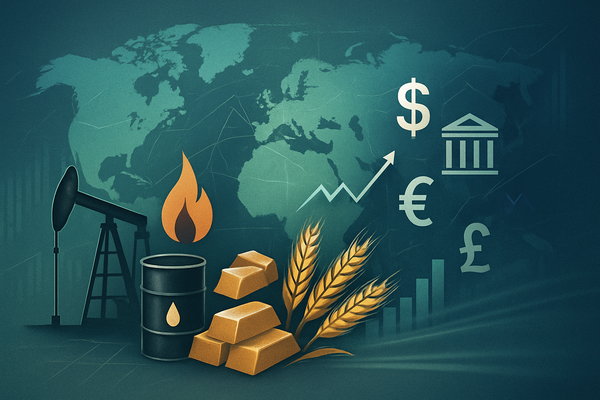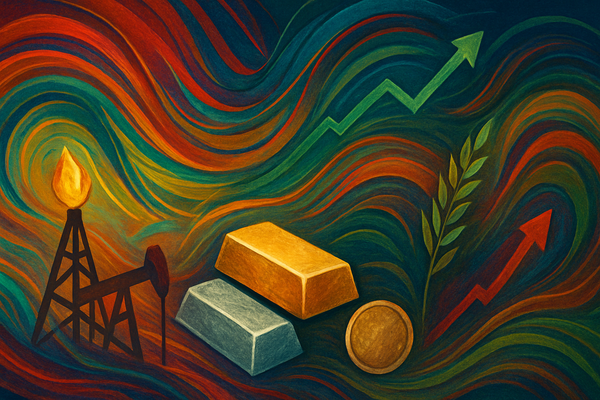Precious Metals Plunge: Hawkish Fed Comments Trigger Gold and Silver Rout

Gold and silver markets experienced a dramatic downturn on Friday, November 14, 2025, as hawkish remarks from U.S. Federal Reserve officials sent shockwaves through global financial markets. The sharp decline, which saw gold plummet by Rs 5,000 per 10 gram and silver by a staggering Rs 8,700 per kilogram in domestic markets, has fundamentally shifted investor sentiment, clouding the outlook for precious metals and highlighting the profound influence of central bank policy on commodity prices. This significant event underscores a renewed focus on inflation control by the Fed, pushing back expectations for interest rate cuts and strengthening the U.S. dollar, thereby diminishing the appeal of non-yielding assets.
The Immediate Aftermath: A Market in Turmoil
The dramatic fall in precious metal prices on November 14, 2025, was a direct consequence of a definitive shift in the U.S. Federal Reserve's stance. In India, domestic gold prices saw a steep decline, nearing Rs 5,000 per 10 gram, with the yellow metal touching a day's low of Rs 1,21,895. Internationally, gold was down by $127 per troy ounce, with December gold futures trading at $4,119.00, a $75.50 drop. Silver, often more volatile than gold, bore the brunt of the sell-off, with domestic rates plunging by Rs 8,700 per kilogram to a day's low of Rs 1,53,729. On the COMEX, silver futures were hovering around $50.21, reflecting a 5.56% decrease, and December silver prices were down $1.53 at $51.63.
The catalyst for this market upheaval was a series of "hawkish comments from U.S. Federal Reserve officials," which effectively dimmed the prospects of an interest rate cut in December. Specifically, market expectations, as tracked by CME Group's FedWatch tool, showed the probability of a December Fed rate cut falling from 63% on November 12 to 47% on November 13. Federal Reserve Chairman Jerome Powell had previously stated that "another interest rate cut in December is 'not on the cards'," reinforcing the central bank's cautious approach. This rhetoric, coupled with "hawkish Fedspeak and data uncertainty," led to a reversal in U.S. Treasury yields, which moved higher. The subsequent strengthening of the U.S. dollar made dollar-denominated assets, including gold and silver, less attractive to international investors, as it increased the cost of purchasing them.
Corporate Repercussions: Winners and Losers in the Metals Market
The sharp decline in gold and silver prices will inevitably create distinct winners and losers within the financial ecosystem, particularly impacting companies directly involved in the precious metals sector. Mining companies, whose profitability is directly tied to commodity prices, are expected to face significant headwinds.
Major gold producers such as Newmont Corporation (NYSE: NEM) and Barrick Gold Corporation (NYSE: GOLD) will likely see their revenues and profit margins squeezed. Lower gold prices reduce the value of their extracted metal, potentially leading to decreased earnings per share and a negative impact on their stock valuations. Companies with higher operating costs or substantial debt loads will be particularly vulnerable, as reduced cash flows could strain their financial health and ability to service debt or fund future exploration and development projects. Similarly, silver-focused miners like Pan American Silver Corp. (NASDAQ: PAAS) and First Majestic Silver Corp. (NYSE: AG) will contend with the double whammy of falling silver prices and potentially higher input costs, further compressing their margins. These companies might be forced to cut exploration budgets, defer capital expenditures, or even place higher-cost mines on care and maintenance, leading to potential job losses and reduced economic activity in mining regions.
Conversely, while direct "winners" from falling precious metal prices are less evident within the commodity space itself, the broader market dynamics suggest shifts. A stronger U.S. dollar, a direct result of the Fed's hawkish stance, generally benefits companies with significant international operations that report earnings in dollars, as their foreign revenues translate into more dollars. Furthermore, the expectation of higher-for-longer interest rates could provide a boost to financial institutions, such as commercial banks, whose net interest margins typically expand in a rising rate environment. However, the immediate and most pronounced impact remains on the precious metals sector, with miners absorbing the brunt of the downturn.
Broader Significance: A Hawkish Pivot and Its Wider Implications
This significant drop in gold and silver prices is not an isolated event but rather fits into a broader industry trend characterized by the U.S. Federal Reserve's unwavering commitment to combating inflation. The Fed's hawkish pivot underscores its priority of achieving price stability, even if it means maintaining a tighter monetary policy for longer than previously anticipated. This event serves as a stark reminder of the inverse relationship between interest rate expectations and the appeal of non-yielding assets like gold and silver. As interest rates rise or are expected to remain high, the opportunity cost of holding precious metals increases, diverting investor capital towards higher-yielding alternatives.
The ripple effects of this hawkish stance extend beyond precious metals. A stronger U.S. dollar, driven by higher interest rates, can create challenges for emerging markets by making dollar-denominated debt more expensive to service and potentially leading to capital outflows. Other commodities may also experience downward pressure if the stronger dollar and higher rates signal a slowdown in global economic growth. From a regulatory and policy perspective, this event reinforces the Fed's independence and its willingness to make tough decisions to manage the economy, even if those decisions cause short-term market volatility. Historically, periods of sustained Fed hawkishness, such as those seen in September 2023, January 2024, and December 2024 (when gold and silver also declined in response to Fed projections of further rate hikes or reduced easing), have consistently impacted precious metals negatively. These precedents highlight a recurring pattern where the Fed's inflation-fighting resolve takes precedence, often at the expense of gold and silver's safe-haven appeal.
What Comes Next: Navigating Volatility and Strategic Shifts
Looking ahead, the precious metals market is likely to remain volatile in the short term as investors digest the implications of the Fed's hawkish stance. The immediate future will be characterized by continued uncertainty regarding the timing and magnitude of future interest rate adjustments. Short-term possibilities include further downward pressure on gold and silver prices if the Fed maintains its aggressive posture or if economic data continues to support a tighter monetary policy. Investors will be closely watching upcoming inflation reports, employment figures, and any further statements from Fed officials for clues on the trajectory of monetary policy.
In the long term, the appeal of gold and silver could re-emerge if global economic conditions deteriorate significantly, leading to a flight to safety, or if inflation proves more persistent than the Fed anticipates, forcing a reassessment of its strategy. However, until then, mining companies will need to consider strategic pivots. This could involve focusing on cost reduction initiatives, optimizing existing operations, or selectively investing in high-grade deposits to maintain profitability in a lower-price environment. Market opportunities may arise for investors with a long-term horizon who believe in the intrinsic value of precious metals as a hedge against systemic risks, but caution will be paramount. Potential scenarios range from a prolonged period of suppressed prices if the Fed successfully tames inflation without a severe recession, to a renewed rally if economic instability or geopolitical tensions escalate.
Comprehensive Wrap-up: A New Era for Precious Metals
The sharp decline in gold and silver prices on November 14, 2025, marks a pivotal moment for the precious metals market, underscoring the dominant influence of U.S. monetary policy. The hawkish comments from the Federal Reserve, signaling a potential delay in interest rate cuts, have effectively reset investor expectations, pushing back the narrative of an imminent easing cycle. This event highlights the critical interplay between interest rates, the U.S. dollar's strength, and the attractiveness of non-yielding assets like gold and silver.
Moving forward, the market will likely operate under a cloud of caution for precious metals investors. The Fed's commitment to bringing inflation down to its target remains the primary driver, and any indications of a sustained tightening cycle will continue to exert pressure on gold and silver. Investors should closely monitor key economic indicators, particularly inflation data and employment figures, as well as every utterance from Federal Reserve officials. The strength of the U.S. dollar will also be a crucial factor, as a stronger dollar typically diminishes the purchasing power of other currencies, making dollar-denominated commodities more expensive. While the long-term role of precious metals as a store of value and a hedge against uncertainty remains, the immediate future demands a disciplined and watchful approach from market participants.
This content is intended for informational purposes only and is not financial advice



